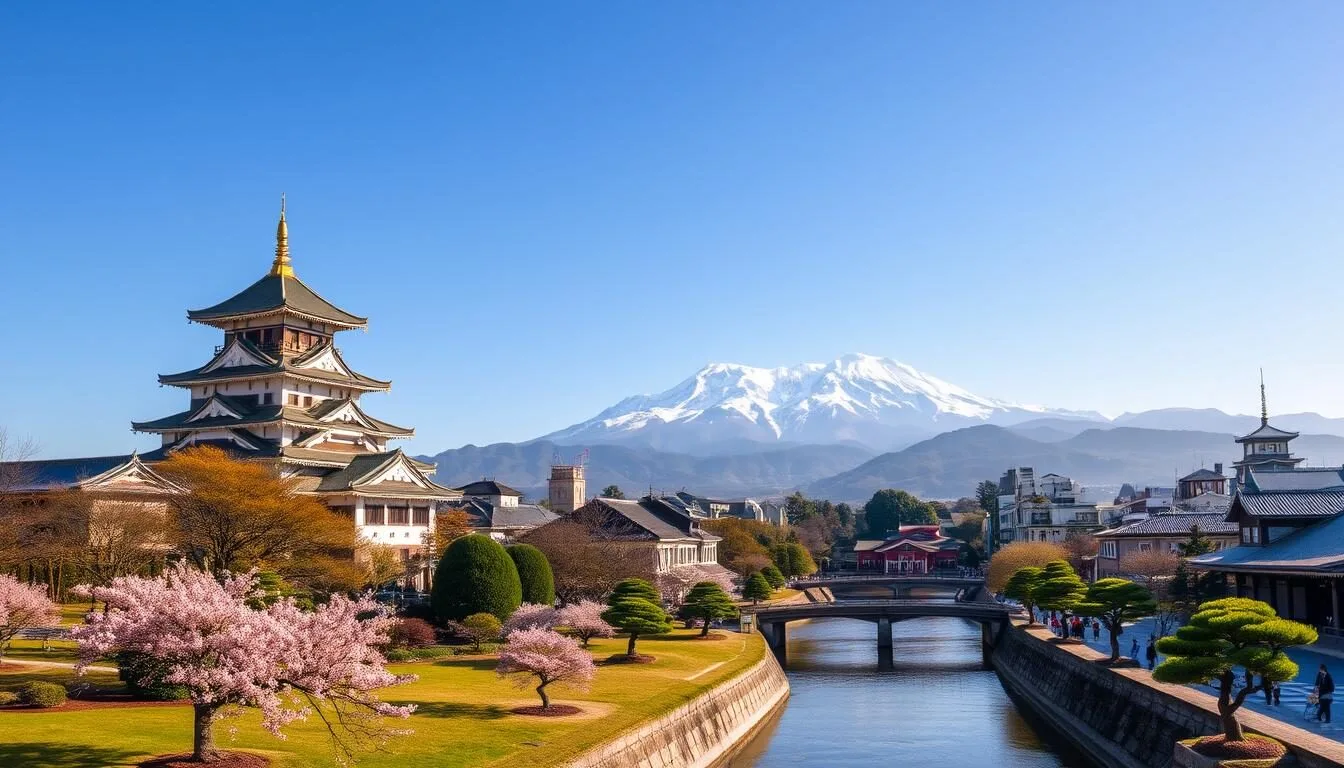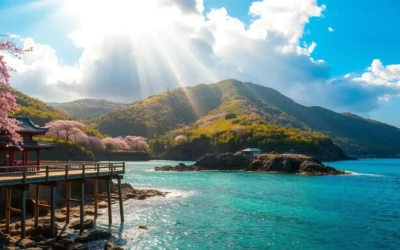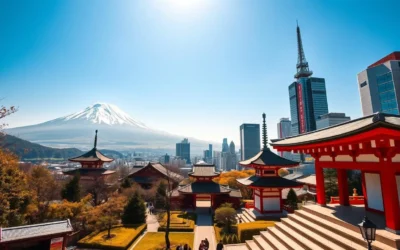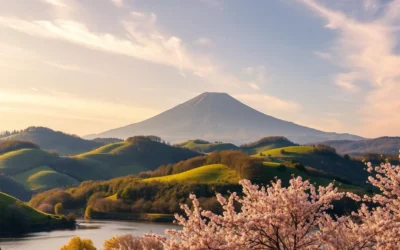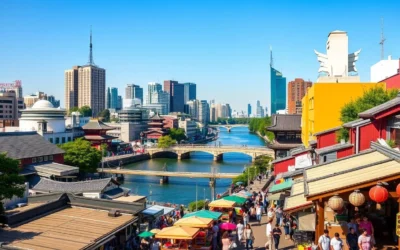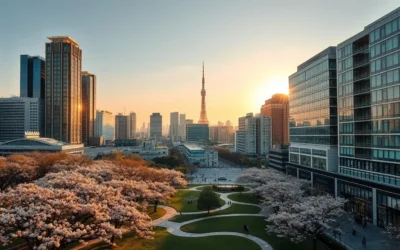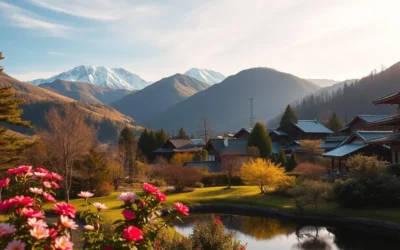Located on Japan’s north coast, Toyama City is a treasure trove of natural beauty, cultural experiences, and culinary delights waiting to be explored. As you venture into this charming city, you’ll uncover a perfect blend of traditional and modern attractions that make it an ideal destination for travelers.
Approximately 400km northwest of Tokyo, Toyama serves as a gateway to the spectacular Tateyama-Kurobe Alpine Route and the North Japan Alps. You can indulge in the region’s exceptional seafood, visit a beautiful castle park, or take a scenic river cruise, making it a great place to experience the best things to do in the area.
With this guide, you’ll get to know the top picks for Toyama City, from natural wonders to cultural sites and culinary experiences that showcase the region’s diverse appeal.
Discovering Toyama City: Japan’s Hidden Gem
Tucked away on Japan’s north coast, Toyama City is a treasure trove of history, culture, and natural beauty. As you explore this charming destination, you’ll discover a unique blend of modern architecture, historical sites, and a relaxed atmosphere that makes it perfect for travelers seeking authentic Japanese experiences.
Where is Toyama Located?
Toyama City sits quietly along Japan’s north coast, approximately 400km northwest of Tokyo, making it accessible via the Hokuriku Shinkansen bullet train in just 2.5 hours from the capital. The city’s strategic location allows for easy access to nearby Kanazawa and more distant cities like Kyoto and Osaka.
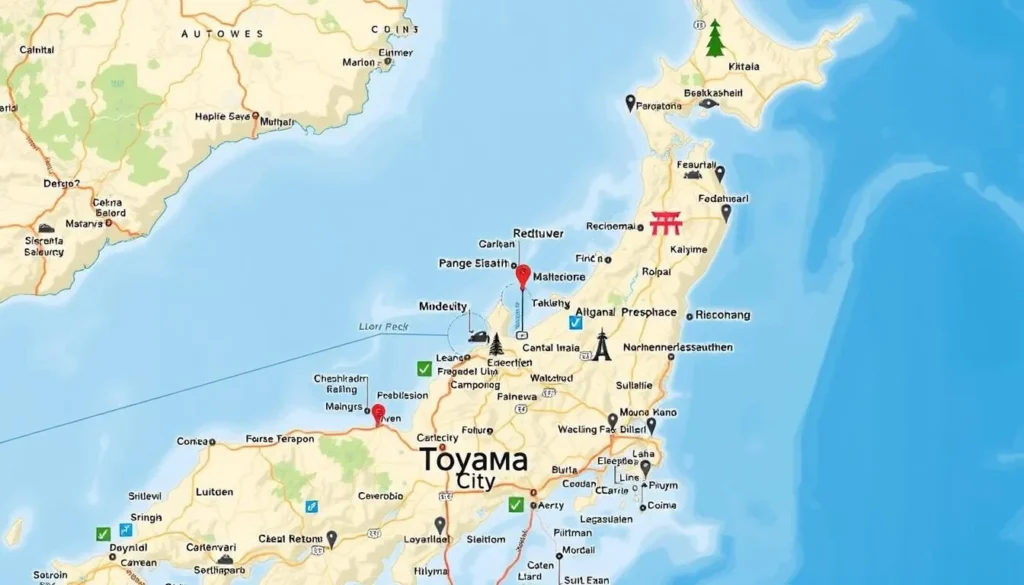
Why Visit Toyama City?
Toyama City is a great destination for foodies, with its outstanding seafood considered some of the best in Japan. The city’s unique topography creates a natural “fish tank” with nutrients flowing down from the mountains, making it a paradise for seafood lovers. As visitors explore the city, they’ll discover a rich history as a castle town and its legacy as a center for medicine and glass production.
The region is also a convenient launching point for exploring the nearby Tateyama-Kurobe Alpine Route and Japan’s Northern Alps, offering breathtaking mountain scenery and outdoor adventures throughout the year. With its own distinct charm, Toyama City is an ideal destination for travelers seeking authentic Japanese experiences in the region.
Tateyama-Kurobe Alpine Route: A Spectacular Mountain Journey
Experience the breathtaking beauty of the Tateyama-Kurobe Alpine Route, one of Japan’s most spectacular mountain journeys. This route connects Toyama and Nagano prefectures through the Northern Japan Alps, offering a unique travel experience.
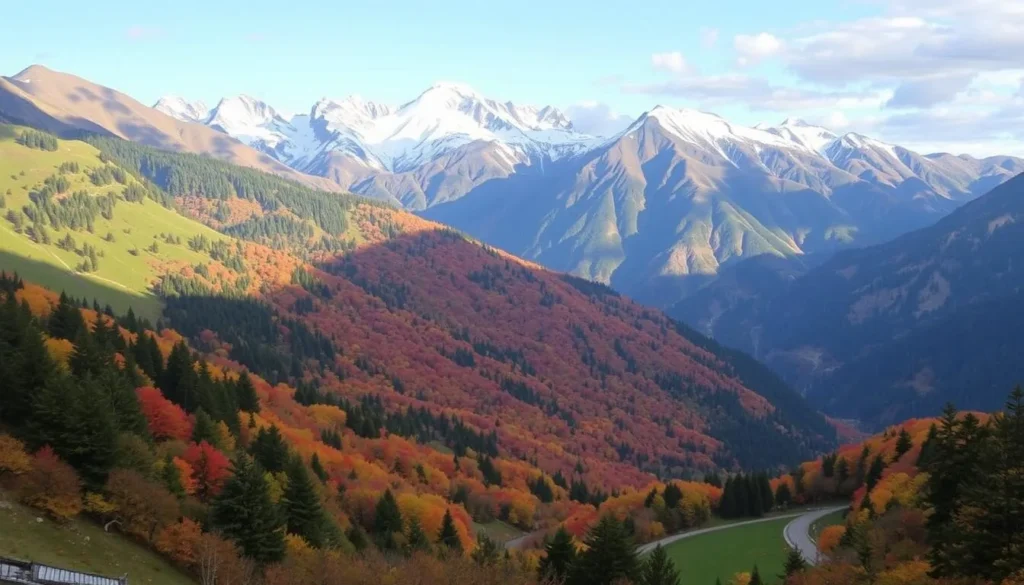
The Famous Snow Walls
From mid-April to late June, the Tateyama-Kurobe Alpine Route is famous for its immense snow walls that can reach heights of up to 20 meters. Walking through this corridor of snow is an unforgettable experience, surrounded by the stunning views of the alpine landscape.
The snow walls are a natural wonder, creating a breathtaking scene that attracts visitors from around the world.
Kurobe Dam: Japan’s Tallest Dam
One of the highlights of the Tateyama-Kurobe Alpine Route is the Kurobe Dam, Japan’s tallest dam at 186 meters high. This magnificent engineering achievement is a must-see, featuring impressive water discharge demonstrations that create rainbows on sunny days.
The Kurobe Dam is not only an engineering marvel but also a popular spot for photography, offering stunning views of the surrounding mountains.
Best Time to Visit the Alpine Route
The Tateyama-Kurobe Alpine Route is open from mid-April to mid-November, with each season offering different highlights. In the spring, you can enjoy the snow walls, while summer is ideal for alpine hiking. Autumn brings stunning foliage in October, making it a great time to visit for nature lovers.
How to Access from Toyama City
Accessing the Tateyama-Kurobe Alpine Route from Toyama City is straightforward. Start at Dentetsu-Toyama Station and take the Toyama Chiho Railway to Tateyama Station. From there, you’ll begin your ascent through various transportation systems, including cable cars, trolley buses, and ropeways, to Murodo, Japan’s highest station at 2,450 meters.
Kurobe Gorge Railway: Riding Through Natural Beauty

Riding the Kurobe Gorge Railway is an unforgettable experience that showcases Japan’s natural beauty. The railway winds through Japan’s deepest canyon on a narrow-gauge track, offering breathtaking views of the surrounding landscape. As you travel along the 20km route, you’ll pass through several stations where you can disembark and explore walking trails, visit hot springs, or simply take in the scenery.
The train journey takes approximately 80 minutes, during which you’ll cross spectacular bridges, including the famous Atobiki Bridge, which stands 60 meters above the gorge. The open-air carriages provide unobstructed views of the dramatic landscape, making it a truly immersive experience.
Scenic Highlights Along the Route
The Kurobe Gorge Railway is renowned for its stunning scenery. As you wind through the gorge, you’ll be treated to vibrant green foliage in summer and spectacular autumn colors in fall. The railway line includes several spectacular bridges and beautiful hot springs, such as Kuronagi Onsen and Kanetsuri Kawara Onsen.
Several stations along the route allow you to disembark and explore the surrounding area. You can walk along trails, visit local onsen, or enjoy a meal at one of the many restaurants. The railway offers a unique way to experience the natural beauty of the Kurobe Gorge.
Seasonal Colors and Best Photo Spots
The Kurobe Gorge is a photographer’s paradise, with seasonal changes transforming the landscape throughout the year. October and November are particularly popular times to visit, as the autumn colors are at their peak. The best photo spots include the view from Kuronagi Station’s promenade, where you can capture the red trolley trains crossing bridges against the backdrop of forested mountains.
The various bridges along the route offer stunning views of the emerald-green waters of the Kurobe River. As the train seems to float above the water, you’ll have ample opportunities to take breathtaking photos. Be sure to bring your camera to capture the beauty of the Kurobe Gorge.
Gokayama: UNESCO World Heritage Village Experience
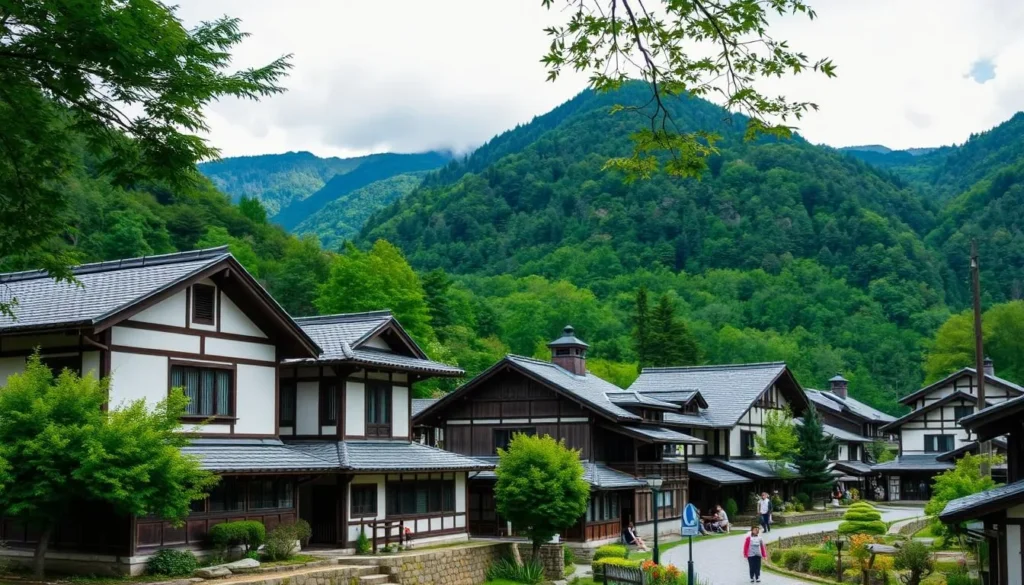
Explore the traditional villages of Gokayama, a UNESCO World Heritage site. Gokayama is a lesser-visited but equally charming destination compared to its neighbor, Shirakawa-go. Spread across three major villages—Ainokura, Kamitaira, and Suganuma—Gokayama offers a unique cultural experience in each village.
Traditional Gassho-Zukuri Houses
The villages in Gokayama are renowned for their traditional gassho-zukuri houses, which feature thatched roofs designed to resemble hands in prayer. These houses, some over 300 years old, are a testament to the region’s rich cultural heritage and architectural ingenuity. The steep roofs were designed to withstand heavy snowfall, a common occurrence in this mountainous region.
The traditional houses in Gokayama are not just aesthetically pleasing; they also provide a glimpse into the lives of the people who lived there. The multiple floors of these houses were used for various purposes, including silk production during the winter months.
Cultural Activities in Ainokura Village
Ainokura Village offers a range of cultural activities that allow visitors to immerse themselves in traditional Japanese culture. You can try your hand at making washi (Japanese paper), crafting traditional instruments, preparing soba noodles, or producing tofu using age-old methods. These activities provide a unique experience and a deeper understanding of the local culture.
The village also offers opportunities to explore the traditional houses and learn about the history and significance of the gassho-zukuri architecture.
Comparing Gokayama and Shirakawa-go
While both Gokayama and Shirakawa-go are part of the same UNESCO World Heritage site, they offer distinct experiences. Gokayama is less crowded and provides a more authentic experience of traditional Japanese mountain villages and houses. The natural beauty surrounding Gokayama is also noteworthy, with picturesque landscapes and scenic viewpoints.
In contrast to the more tourist-oriented Shirakawa-go, Gokayama offers a more serene and peaceful atmosphere, making it an ideal destination for those seeking a tranquil experience.
Toyama City, Japan: Best Things to Do – Top Picks for Culture Lovers
Toyama City is a treasure trove of cultural experiences, offering a wide range of activities for culture lovers to enjoy. From world-class museums to traditional craft villages, Toyama City is a destination that will captivate your senses and leave you with lasting memories.
Toyama Glass Art Museum
The Toyama Glass Art Museum is a must-visit attraction for anyone who appreciates beautiful art. Located within the striking Toyama Kirari building, designed by renowned architect Kengo Kuma, the museum showcases an impressive collection of glass art from both Japanese and international artists.
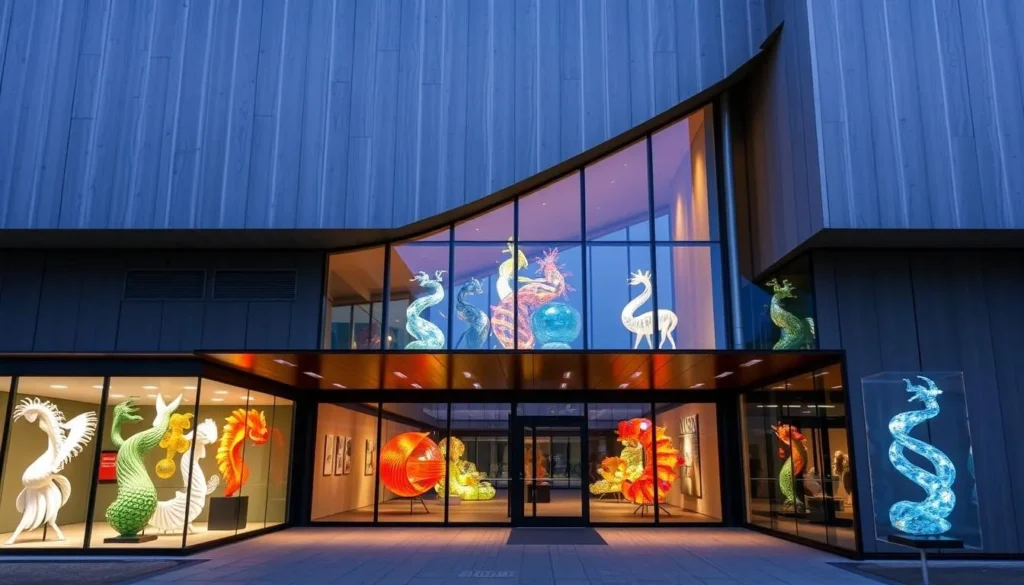
Spanning five floors, the museum features both permanent and rotating exhibitions, including works by the world-famous glass artist Dale Chihuly. With an admission fee of just 200 yen, visitors can enjoy a comprehensive look at contemporary glass art. The museum shop on the second floor offers a variety of glass-inspired stationery, making it an ideal place to find unique souvenirs.
Toyama Municipal Folkcraft Village
Just a short tram ride from the city center, the Toyama Municipal Folkcraft Village offers a peaceful retreat into traditional Japanese culture. This complex comprises nine different facilities, each showcasing various aspects of Japanese crafts and folk art.
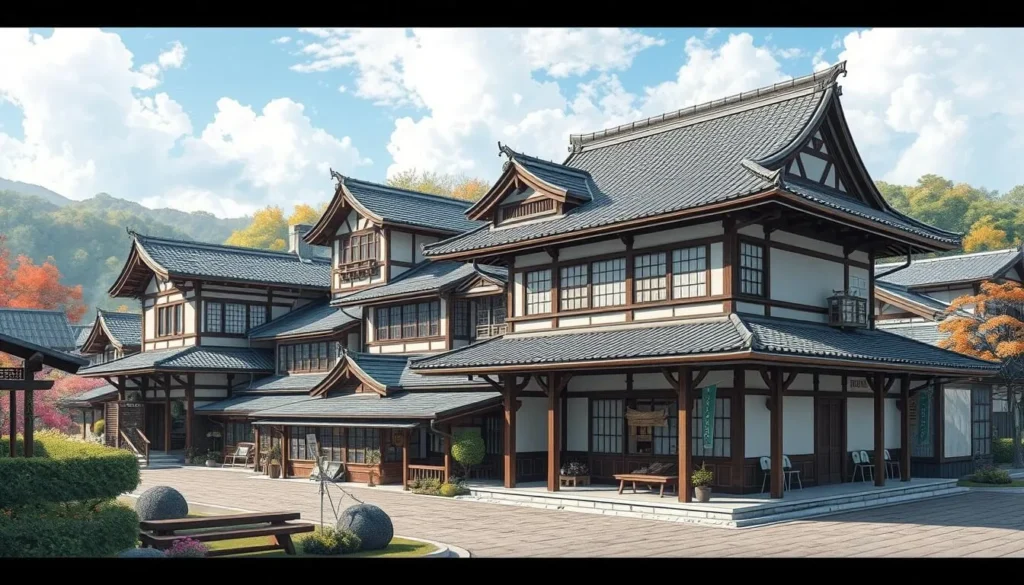
The Folkcraft Village is set in a serene environment that recreates the atmosphere of a mountain village, allowing visitors to explore and appreciate traditional Japanese crafts in a tranquil setting. The complex includes specialized museums focusing on folk art, ceramics, and archaeology, as well as the history of Toyama’s medicine peddlers. Culture lovers should allocate at least 3-4 hours to fully explore the various buildings and participate in traditional experiences like tea ceremonies.
Toyama Castle Park and History Museum
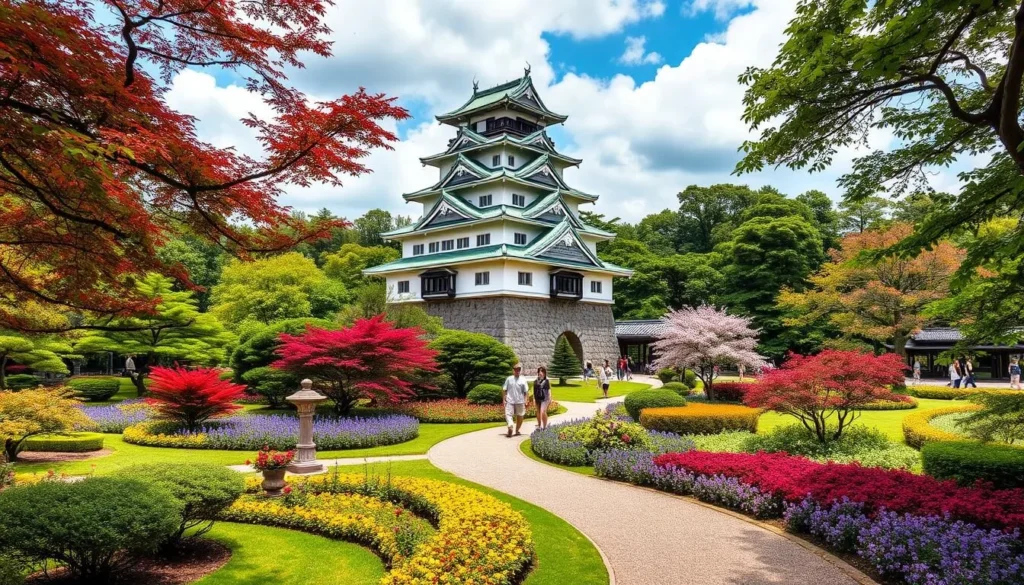
Toyama Castle Park, situated on the site of the former Toyama Castle, is a treasure trove of historical significance and cultural experiences. The park is located a 10-minute walk from JR Toyama Station, making it easily accessible for visitors.
The Castle’s History and Reconstruction
The original Toyama Castle was constructed in 1543 and belonged to the influential Maeda clan. The castle was known as “ukishiro” (floating fortress) due to its moat system, which drew water from nearby rivers, creating a unique defensive feature among Japanese castles. After being dismantled following the Meiji Restoration and later destroyed during World War II bombings, the current castle tower is a 1950s reconstruction that now houses the Toyama City History Museum with exhibits detailing the area’s feudal past.
The museum showcases the history of Toyama City, providing visitors with a glimpse into the region’s rich cultural heritage. By exploring the castle tower and museum, you can gain a deeper understanding of the city’s historical significance and the role it played in Japan’s past.
Japanese Garden and Seasonal Events
The surrounding park features a beautiful traditional Japanese garden with seasonal plantings, stone lanterns, and carefully placed rocks that create different scenic views throughout the year. Throughout the seasons, the castle park hosts various events, including cherry blossom viewing in spring, summer festivals with food stalls and lanterns, autumn foliage illuminations, and occasional historical reenactments that bring the castle’s history to life.
As you stroll through the park, you can enjoy the serene atmosphere and appreciate the beauty of the Japanese garden. The park’s seasonal events offer a unique experience, allowing you to connect with the local culture and community.
Matsukawa River Experiences
The Matsukawa River offers a tranquil retreat in the heart of Toyama City. As you explore this beautiful area, you’ll discover a range of experiences that showcase the city’s natural beauty and urban charm.
Pleasure Boat Cruises
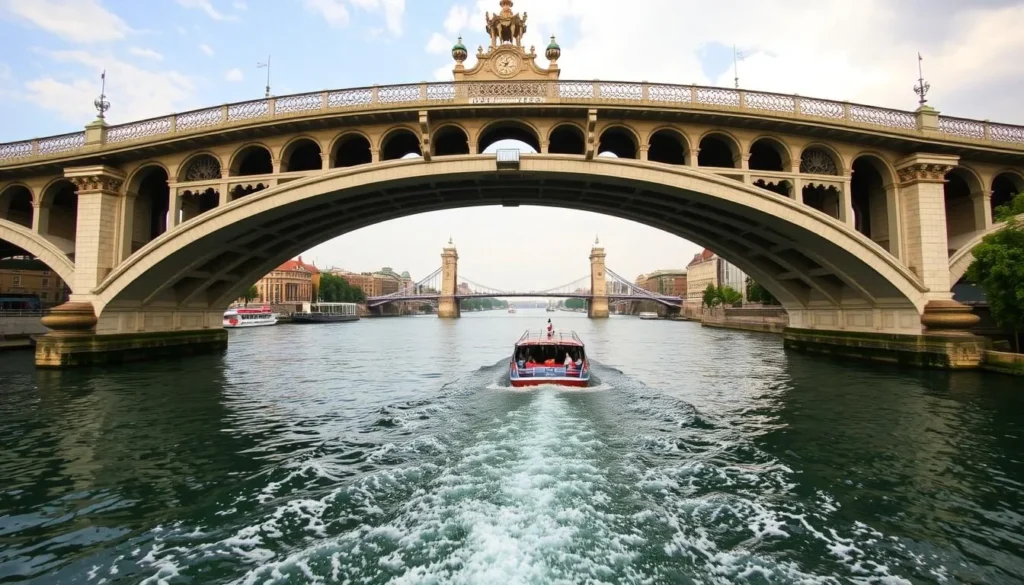
Take a 30-minute pleasure boat cruise along the Matsukawa River, operating throughout the day. You’ll glide under beautiful bridges and past cherry trees that create a stunning tunnel of blossoms in spring, making this a romantic activity in the city. The boat cruise provides a unique perspective on Toyama City’s architecture and natural beauty, offering a memorable river experience.
Riverside Walks and Sculpture Trail
Along both banks of the Matsukawa River, a well-maintained walking path invites you to take a leisurely stroll. Frequent benches allow you to sit, watch the boats, or simply enjoy the peaceful atmosphere. The Matsukawa River Sculpture Trail features contemporary art by Japanese and international artists, creating an open-air gallery that changes with the seasons. For photography enthusiasts, the river offers excellent opportunities to capture beautiful views of the city skyline, especially during the golden hour or when illuminated at night.
As you enjoy the river views, you’ll appreciate the blend of natural beauty and urban landscape that Toyama City offers. The Matsukawa River is a perfect spot to relax and enjoy the city’s serene side.
Takaoka: A Perfect Day Trip from Toyama
Located about 50 minutes from Toyama Station, Takaoka is a hidden gem waiting to be explored. You can take the Ainokaze Toyama Railway Line from Toyama Station to reach Takaoka, making it an ideal day trip destination.
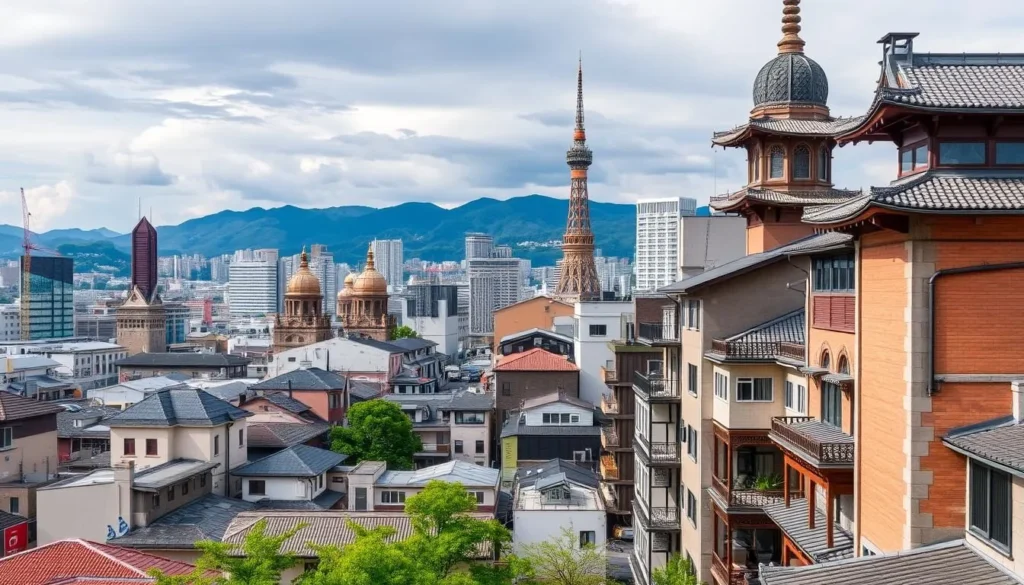
Takaoka is the second largest city in Toyama Prefecture and is home to several notable historical attractions. The city’s rich history and cultural significance make it an attractive destination for tourists.
The Great Buddha of Takaoka
The Takaoka Daibutsu, one of Japan’s three most famous giant Buddha statues, is a must-visit attraction. Standing 15.85 meters tall and weighing 65 tons, this bronze Buddha was created in 1745 and later recast after a fire damaged the original.
Zuiryuji Temple: National Treasure
Zuiryuji Temple, a registered National Treasure, is another significant attraction in Takaoka. This Soto Zen Buddhist temple is renowned for its classical Zen Buddhist architecture, featuring a main gate, Buddha hall, and meditation hall arranged in perfect symmetry, surrounded by beautiful gardens.
Doraemon’s Hometown Attractions
Takaoka is also famous for being the hometown of Fujiko F. Fujio, the creator of the popular anime character Doraemon. Visitors can enjoy Doraemon-themed trams and character statues at the train station, making it a delightful destination for anime fans.
When planning your day trip to Takaoka, consider visiting the historic districts of Kanayamachi and Yamachosuji, which preserve Takaoka’s 400-year tradition of metal casting. You can explore traditional workshops where artisans still practice copper and bronze casting techniques passed down through generations.
Toyama Bay: Seafood Paradise
With its unique underwater canyon, Toyama Bay creates a natural fish tank, teeming with a variety of seafood. The bay’s topography, with its sharply dropping seafloor, forms a submerged canyon that acts as a natural boundary for marine life. Nutrients flowing down from the Northern Alps enrich the waters, creating exceptionally rich fishing grounds.
Shinminato Kito Market
Shinminato Kito Market is a must-visit destination for anyone looking to experience the freshest seafood Toyama Bay has to offer. Open daily from 9:00 to 17:00, this market allows you to browse stalls selling the morning’s catch, sample fresh sashimi, and enjoy seafood bowls prepared on the spot with fish caught just hours earlier.
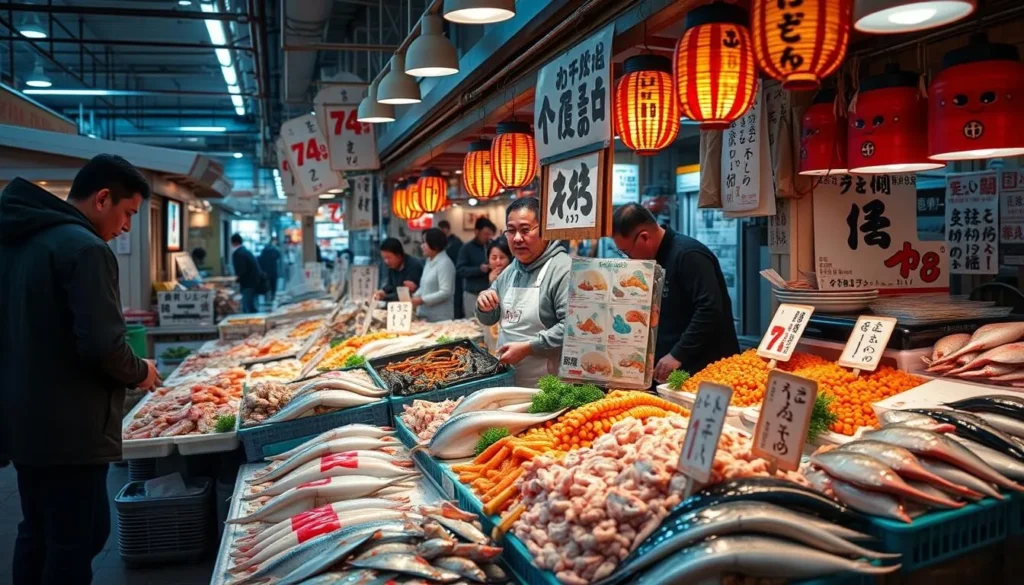
Amaharashi Coast Views
For a breathtaking view that combines Toyama’s coastal beauty with its mountainous backdrop, visit the coast of Amaharashi. Here, you can see the famous “Woman’s Rock” (Onnaiwa) set against the snow-capped Tateyama Mountain Range, a scene that has inspired Japanese artists and poets for centuries. The Toyama Bay area is not just about seafood; it’s also about the stunning natural beauty that surrounds it.
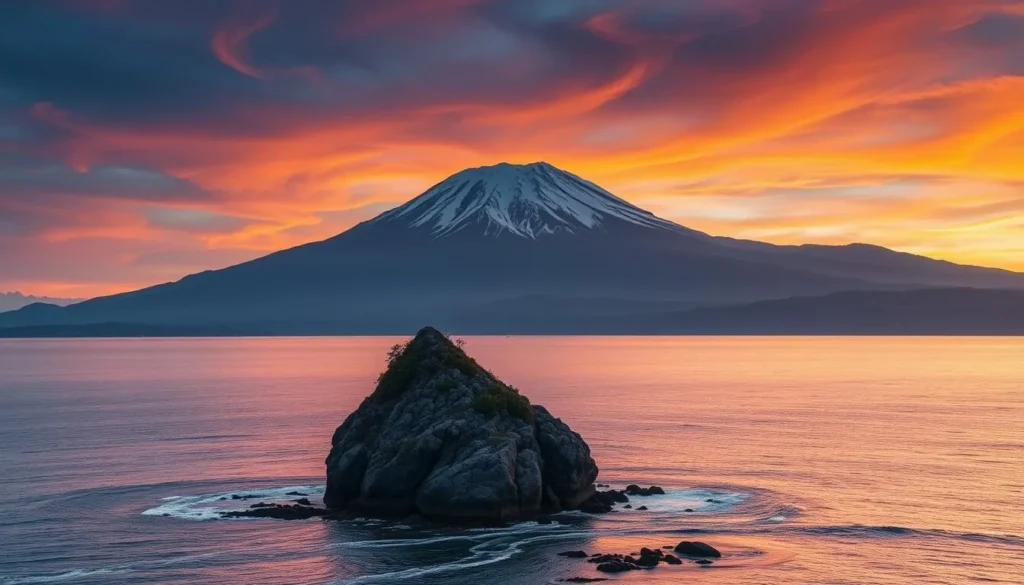
The proximity of the fishing grounds to the markets in Toyama Bay ensures that the seafood is exceptionally fresh, with many catches reaching restaurants within 20 minutes of being landed. This freshness, combined with the variety of seafood available, makes Toyama Bay a true paradise for seafood lovers.
Must-Try Local Cuisine in Toyama
Toyama’s unique geographical location makes its cuisine exceptionally fresh. The city’s proximity to the Sea of Japan ensures that the seafood is always of the highest quality, making it a paradise for food lovers. You will find a variety of dishes that showcase the region’s culinary expertise.
Toyama Bay Sushi and Glass Shrimp
Toyama Bay Sushi is renowned for featuring the freshest local seafood, including the prized glass shrimp (shiro-ebi), which are considered the “jewels of Toyama Bay.” These seafood delicacies are served in various ways: as sashimi, sushi, or tempura, each preparation highlighting their natural sweetness and delicate flavor.
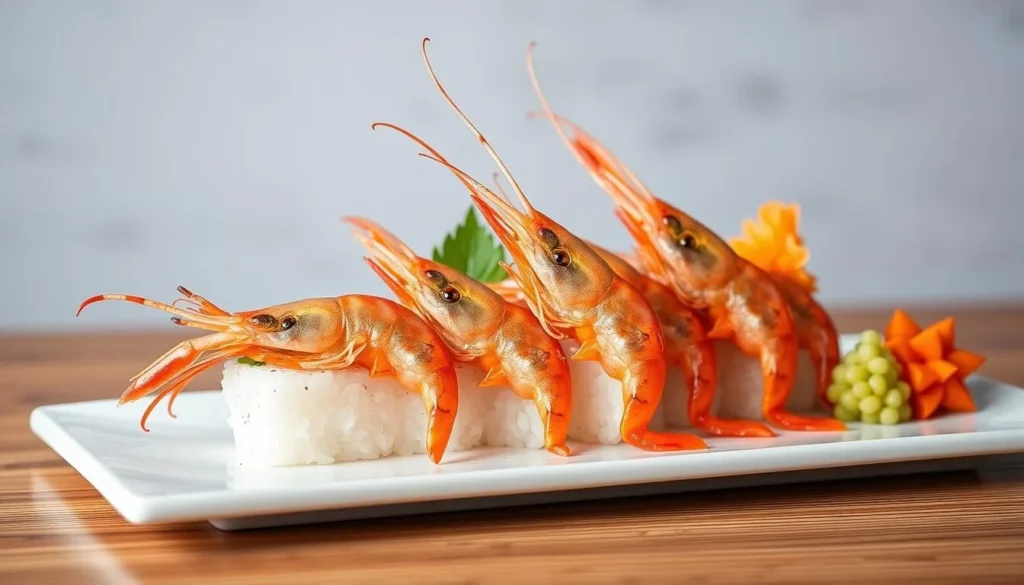
Toyama Black Ramen
In contrast to the delicate flavors of seafood, Toyama Black Ramen offers a rich, intensely dark, soy sauce-based broth. This dish, historically developed for manual laborers, features chewy noodles and is typically topped with char siu pork, bamboo shoots, and green onions. You can find the best Toyama Black Ramen at local restaurants throughout the city.
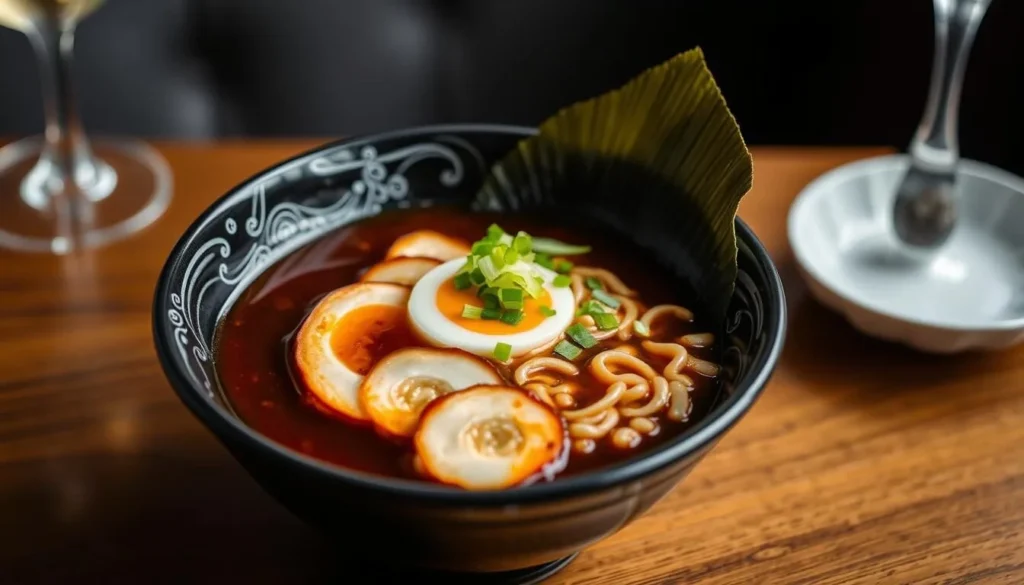
Masu Zushi and Other Local Specialties
Masu-zushi, a local specialty featuring trout pressed onto vinegared rice and wrapped in bamboo leaves, represents the perfect blend of mountain and sea influences in Toyama cuisine. Other local specialties worth trying include hotaru-ika (firefly squid) in spring, beni-zuwaigani (red snow crab) in winter, and various preparations of yellowtail, considered at its best when caught in the cold waters of Toyama Bay during winter.
When visiting Toyama, be sure to explore the various restaurants that serve these local specialties. From sushi bars to ramen shops, the city’s culinary scene is sure to leave you with unforgettable dining experiences.
Seasonal Highlights in Toyama
Toyama’s seasonal highlights are a true reflection of the region’s natural beauty and cultural heritage. From the breathtaking cherry blossoms in spring to the vibrant festivals of summer and autumn, each season brings its unique charm.
Cherry Blossoms at Matsukawa Park
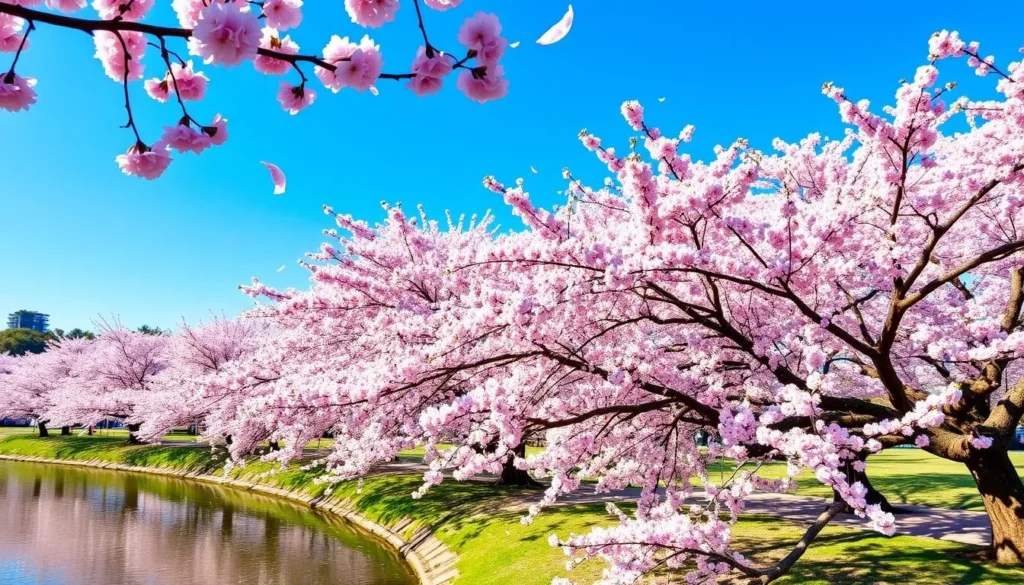
Matsukawa Park is renowned for its stunning cherry blossom displays. Hundreds of sakura trees line the river, creating a picturesque tunnel effect that can be enjoyed from walking paths or during special cherry blossom boat cruises on the canal. The blossoms typically bloom in early to mid-April, slightly later than in Tokyo, giving travelers another chance to experience Japan’s beloved hanami tradition.
Tulip Festival in Tonami
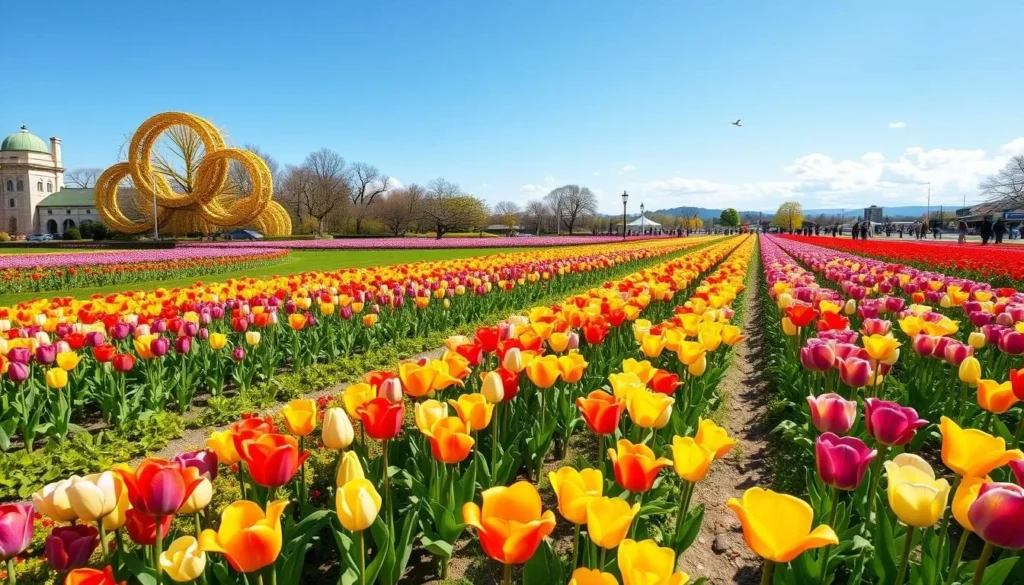
Late April to early May brings the Tonami Tulip Festival, one of Japan’s largest tulip celebrations. The festival features over 3 million flowers across a 7-hectare park, with colorful fields, tulip tunnels, and artistic arrangements that attract flower enthusiasts nationwide.
Owara Kaze no Bon Festival
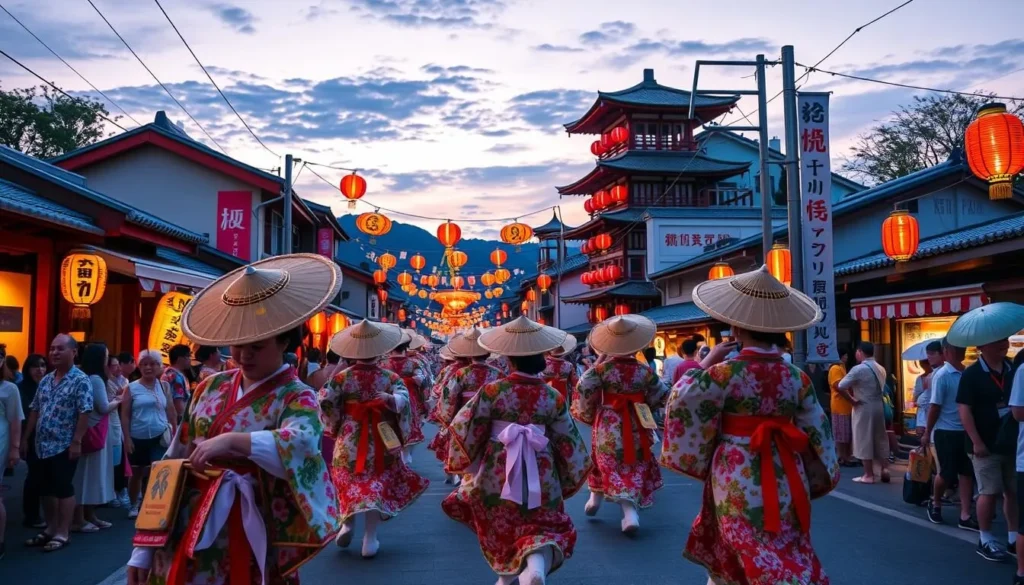
The Owara Kaze no Bon Festival, held during the first three days of September in the Yatsuo district, offers a unique cultural experience. Traditional dances are performed through the streets from afternoon until late night, accompanied by shamisen, taiko drums, and flutes, creating an atmosphere that feels like stepping back in time to ancient Japan.
Each season in Toyama brings its own unique events and experiences, making it a destination that can be enjoyed throughout the year.
Hot Springs and Relaxation
Experience the ultimate in relaxation at one of Toyama’s many hot springs. Toyama Prefecture is renowned for its numerous onsen (hot springs), offering a serene escape for visitors.
With over 100 hot springs, Toyama provides a unique opportunity to unwind in a natural setting. From traditional ryokan to modern resorts, there’s something for every traveler’s taste.
Unazuki Onsen Resort
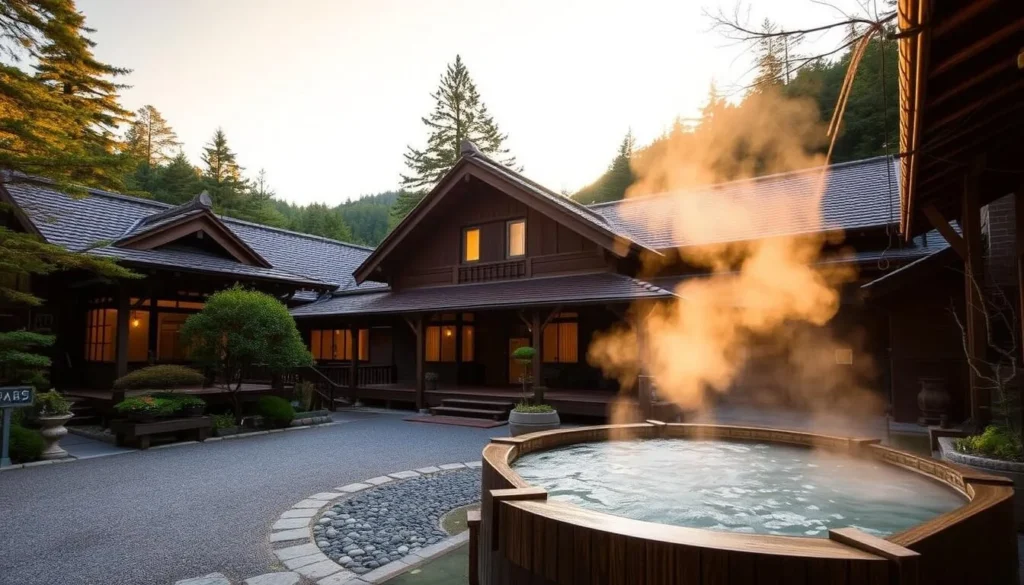
Unazuki Onsen is the largest hot spring town in Toyama Prefecture, situated at the entrance of the beautiful Kurobe Gorge. This resort is famous for its clear, alkaline hot spring waters known for their skin-beautifying properties.
The open-air baths (rotenburo) at Unazuki Onsen offer a magical experience, allowing you to soak in mineral-rich waters while enjoying the forested Kurobe Gorge views.
Other Notable Hot Springs in Toyama Prefecture
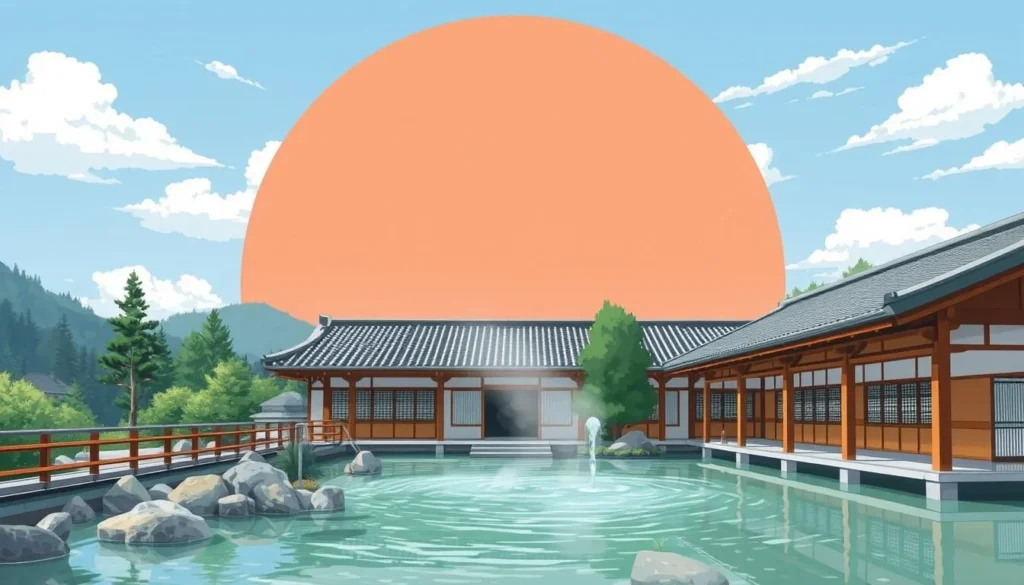
Besides Unazuki Onsen, Toyama Prefecture boasts several other notable hot springs. Kuronagi Onsen, deep in the Kurobe Gorge, offers a unique bathing experience accessible only by scenic railway.
Other highlights include Himi Onsen on the coast, known for combining hot spring bathing with exceptional seafood dining, and the historic Shogawa Onsen, which has been soothing travelers for centuries.
Whether you’re looking to relax in a serene natural setting or experience the local culture, Toyama’s hot springs have something to offer.
Traditional Crafts and Shopping
You can discover Toyama’s rich cultural heritage through its traditional crafts and shopping experiences. The city offers a unique blend of traditional crafts, including glass art, metalwork, and washi paper production.
Toyama’s Medicine Heritage at Ikedaya Yasubei Shoten
Toyama has a rich history of traditional medicine dating back to the 17th century. Ikedaya Yasubei Shoten, a historic pharmacy operating since the Edo period, offers visitors a glimpse into this medicinal tradition. The pharmacy features traditional tools, ingredient containers, and the opportunity to purchase herbal remedies and teas made according to centuries-old formulas.
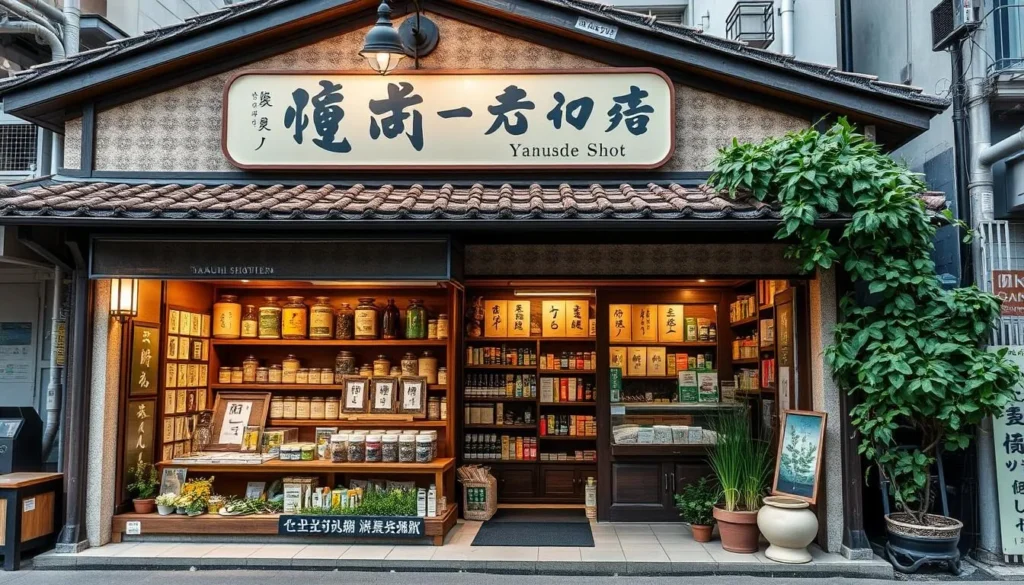
The second floor of Ikedaya houses a restaurant serving meals based on the traditional East Asian principle that “medicine and food share the same origin.” You can enjoy health-conscious dishes that incorporate medicinal herbs and ingredients.
Best Souvenirs from Toyama
When shopping for souvenirs, consider unique items that reflect Toyama’s craftsmanship, such as glass art pieces, shiro-ebi senbei (rice crackers flavored with glass shrimp), kamaboko fish cakes, or small tin crafts showcasing the area’s metalworking traditions.
Toyama’s abundant water resources have also fostered the production of high-quality washi (Japanese paper), making it an elegant souvenir in the form of stationery, book covers, or decorative items.
Day Trips from Toyama City
Day trips from Toyama City offer a chance to experience the diversity and richness of the region’s culture, history, and natural beauty. You can explore nearby destinations that are rich in history, culture, and natural beauty, making for a memorable day trip.
Kanazawa: City of Samurai and Gardens
Kanazawa, just 20 minutes from Toyama on the Hokuriku Shinkansen, is an ideal day trip destination. You can visit the perfectly preserved samurai district, Kenrokuen, one of Japan’s three most beautiful landscape gardens, and the 21st Century Museum of Contemporary Art.
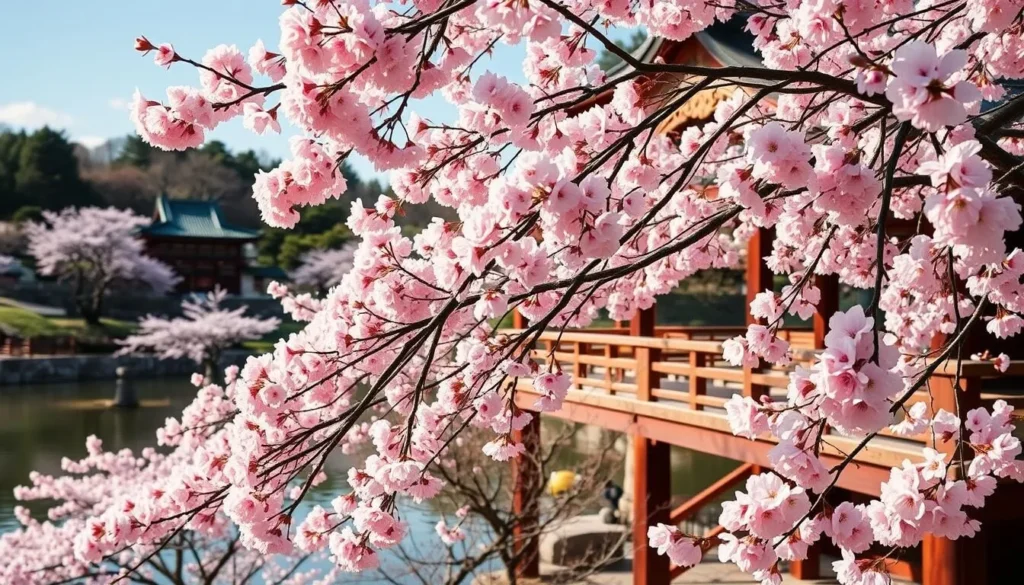
Takayama: Traditional Old Town
The historic mountain town of Takayama, accessible in about 90 minutes by limited express train, offers a glimpse into Edo-period Japan. You can stroll through the beautifully preserved old town, visit morning markets, and explore sake breweries with their distinctive sugidama cedar balls.
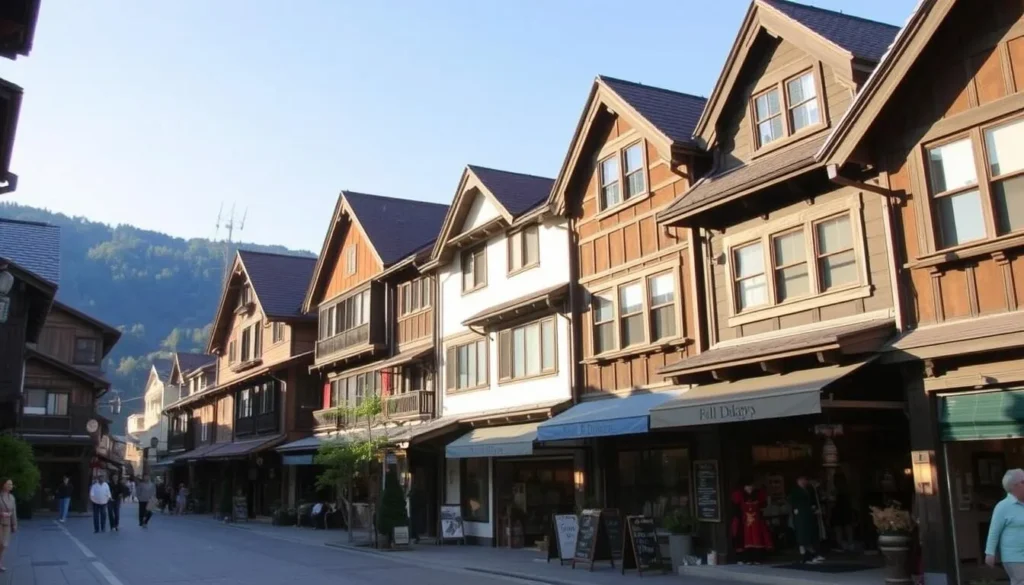
Himi and Namerikawa Coastal Towns
For a coastal experience, the fishing town of Himi provides a more authentic alternative to touristy seafood destinations. You can sample the day’s catch at local markets and enjoy views of the Tateyama mountains across Toyama Bay. Namerikawa is famous for its firefly squid, which you can see on nighttime boat tours from early April to May.
Practical Travel Information
To ensure a smooth and enjoyable trip to Toyama, it’s crucial to understand the practical aspects of traveling there. Whether you’re coming from Tokyo or elsewhere, Toyama is easily accessible by train or air.
Getting to Toyama from Tokyo
Reaching Toyama from Tokyo is convenient via the Hokuriku Shinkansen bullet train, which takes approximately 2 hours and 10 minutes. The train journey offers spectacular views of the Japanese countryside along the way. For those preferring air travel, ANA operates daily flights from Tokyo’s Haneda Airport to Toyama Kitokito Airport, with the flight taking just one hour. A 30-minute bus ride from the airport will take you to Toyama Station and the city center.
Getting Around Toyama City
Getting around Toyama City is easy thanks to its compact size and excellent public transportation system. You can navigate the city using the charming tram network, city buses, or the convenient Toyama City Loop Bus that connects major attractions for tourists. This makes it simple to explore the city’s cultural heritage and natural beauty without hassle.
Best Time to Visit and Weather Tips
The best time to visit Toyama depends on what you want to experience. If you’re interested in the Alpine Route’s snow walls and cherry blossoms, April to June is ideal. For comfortable hiking weather and festivals, July to September is best. October to November offers stunning autumn foliage. Be prepared for unpredictable weather, as winters can bring heavy snowfall, especially in mountainous areas, while summers can be hot and humid with occasional rain. Checking forecasts and packing layers is recommended.
Conclusion: Making the Most of Your Toyama Adventure
As you plan your Japanese adventure, Toyama City stands out as a hidden gem worth exploring. With its unique blend of natural wonders, cultural experiences, and culinary delights, Toyama offers a rewarding experience for travelers willing to venture beyond Japan’s more famous destinations.
To make the most of your visit, consider allocating at least two to three days to explore the region. You can spend one day discovering Toyama City, another experiencing the breathtaking Tateyama-Kurobe Alpine Route or Kurobe Gorge Railway, and a third day visiting Gokayama or taking a day trip to nearby attractions.
Don’t rush your experience; Toyama’s charm lies in its relaxed pace, allowing you to savor moments like enjoying fresh seafood or watching the sunset over Toyama Bay. Balance your itinerary between natural highlights and cultural experiences to gain a full appreciation of this special region.
Whether you’re visiting Toyama as a standalone destination or as part of a broader journey through Central Japan, the memories of snow-capped mountains, fresh seafood, and local hospitality will likely become highlights of your Japanese adventure. Take your time to soak in the beauty and warmth of Toyama, and you’ll leave with unforgettable experiences.
